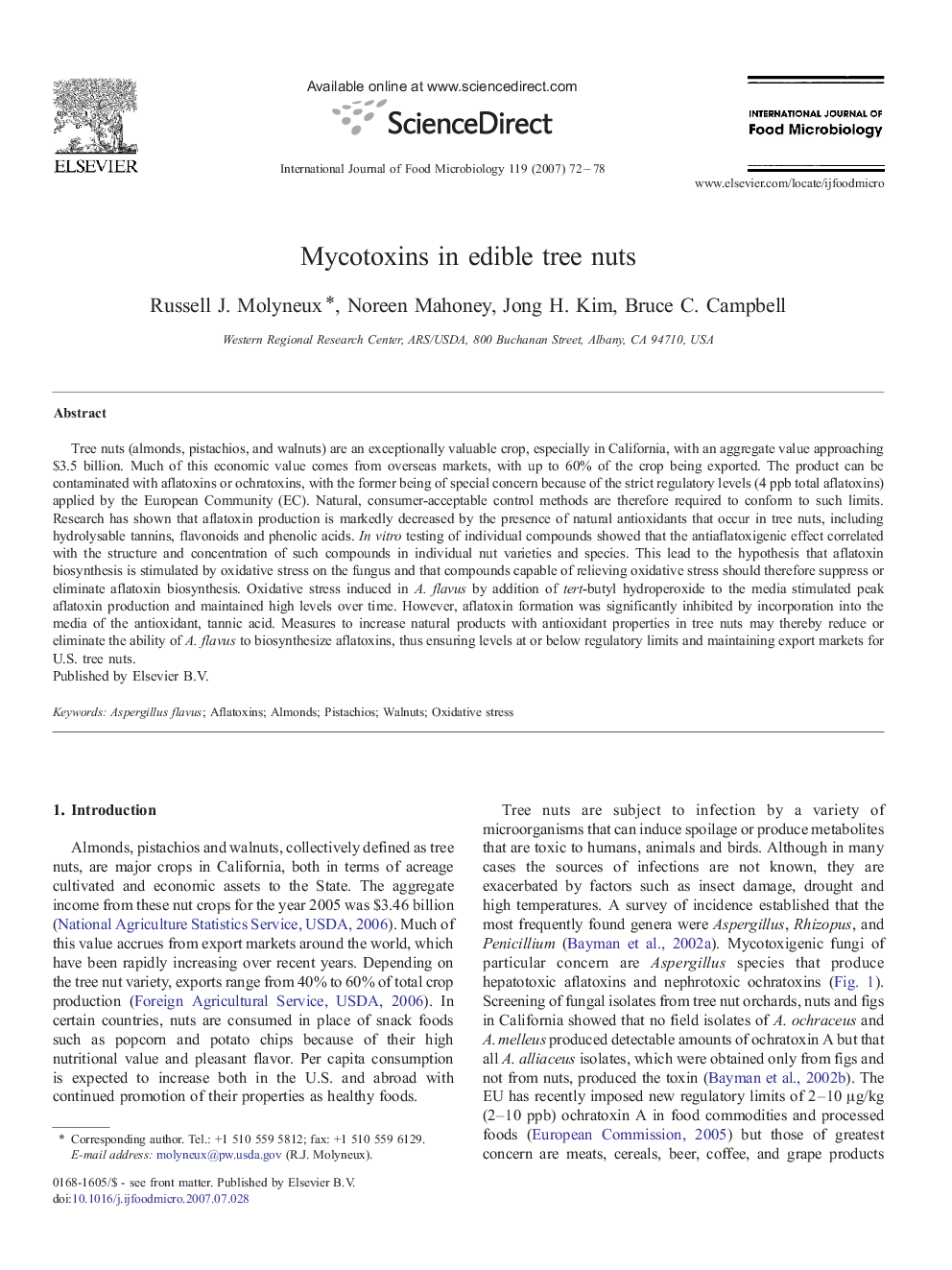| کد مقاله | کد نشریه | سال انتشار | مقاله انگلیسی | نسخه تمام متن |
|---|---|---|---|---|
| 4369328 | 1616738 | 2007 | 7 صفحه PDF | دانلود رایگان |

Tree nuts (almonds, pistachios, and walnuts) are an exceptionally valuable crop, especially in California, with an aggregate value approaching $3.5 billion. Much of this economic value comes from overseas markets, with up to 60% of the crop being exported. The product can be contaminated with aflatoxins or ochratoxins, with the former being of special concern because of the strict regulatory levels (4 ppb total aflatoxins) applied by the European Community (EC). Natural, consumer-acceptable control methods are therefore required to conform to such limits. Research has shown that aflatoxin production is markedly decreased by the presence of natural antioxidants that occur in tree nuts, including hydrolysable tannins, flavonoids and phenolic acids. In vitro testing of individual compounds showed that the antiaflatoxigenic effect correlated with the structure and concentration of such compounds in individual nut varieties and species. This lead to the hypothesis that aflatoxin biosynthesis is stimulated by oxidative stress on the fungus and that compounds capable of relieving oxidative stress should therefore suppress or eliminate aflatoxin biosynthesis. Oxidative stress induced in A. flavus by addition of tert-butyl hydroperoxide to the media stimulated peak aflatoxin production and maintained high levels over time. However, aflatoxin formation was significantly inhibited by incorporation into the media of the antioxidant, tannic acid. Measures to increase natural products with antioxidant properties in tree nuts may thereby reduce or eliminate the ability of A. flavus to biosynthesize aflatoxins, thus ensuring levels at or below regulatory limits and maintaining export markets for U.S. tree nuts.
Journal: International Journal of Food Microbiology - Volume 119, Issues 1–2, 20 October 2007, Pages 72–78